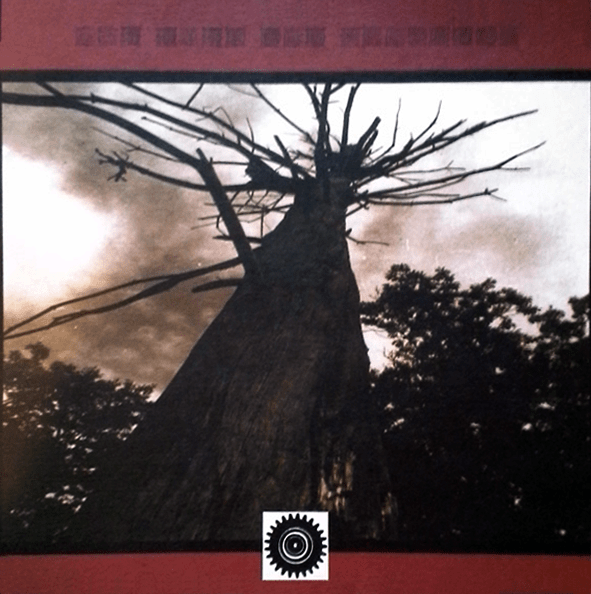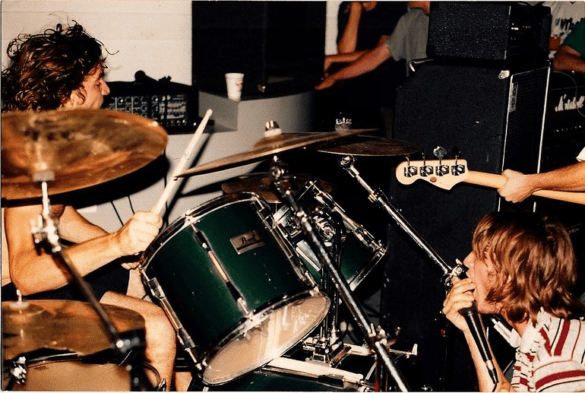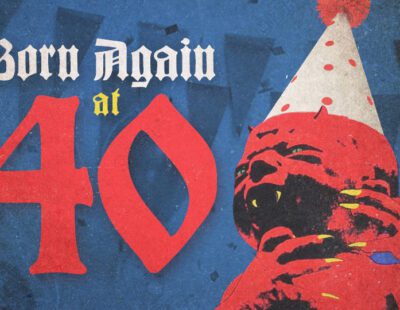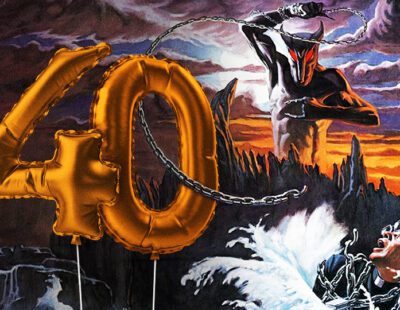
This is unofficially part three in a trilogy of Retrospective pieces that started with German metallic hardcore killers Acme‘s …To Reduce the Choir to One Soloist record, which then took us to Union of Uranus‘ Disaster by Design double 7”. The logical third and final stop (after some wistful daydreams of His Hero Is Gone and Tragedy) is back in Canada, to a band that, legend has it, once jokingly billed themselves as being ex-Union of Uranus to get people out to their gigs. But no hard feelings: that band’s Yannick Lorrain put out One Eyed God Prophecy‘s only record, a self-titled 12”, on his Great American Steak Religion label in 1996 (it’s also rumoured that Lorrain himself was the one saying the band was ex-Uranus as he was helping them book gigs).

So let’s take a walk back to a time when hardcore, metal, crust, grind, and—gulp—screamo converged for a brief moment, for seven songs good enough to still be remembered today.
The first song on the album is “Toddler,” and the band wastes no time getting right into things, leaving it up to the listener to try to decipher the chaos: somewhere in that noisy production are vocals, although the whole thing tends to bleed together into one powerful, all-encompassing crust-punk mush, like if His Hero Is Gone discovered treble and went to town with it. But the six minutes isn’t all just haywire tantrums, as the mid-song break and then crescendo proves; this band (featuring one member who went on to play in Ire, also worth investigating) was basically all crescendo, which is part of what made them so great.
Next up is “Wilf,” which starts ominous and with nods to Uranus and HHIG, before abruptly going into grinding, screaming crust (subtlety was not this band’s strong point), a chaos that only subsides for what in One Eyed God Prophecy’s world passes as a breakdown part and then a quiet reprieve part, but we all know what’s coming next: the build and the release. Long before we all tired of post-metal’s predictable dynamics, we were still being blown away by the template, because it’s a good one, and OEGP did it to perfection. This song feels like it’s at its ending climax at about 2:15… and there’s still over two minutes left. By 3:55 you feel this just can’t build any more. There’s still almost a minute left. Feel the pain.
“Karysun” finishes off side A of the original LP. It starts off even quieter than “Wilf,” the band taking their time to slowly build momentum; just when it seems like it’s going to explode, at 1:45, it doesn’t, going quiet again. For about two seconds, then, yeah, there’s the explosion. Love the final minute of the song too; you can almost imagine this just totally falling apart but the members keep it together, barely, until the end. Now that’s how you put together a great side A of a record.
“End of the Story” kicks off side B with a Neurosian sludge/doom sound, OEGP managing to get a whole lot of apocalypse into its four-minute run time. That part that starts at 0:42 (with the china cymbal crash, natch) is a very of-the-time part, as are the chord changes that follow shortly thereafter, but it’s all aged well, like Acme and Union of Uranus, these songs standing the test of time and also predating a sound that wouldn’t make its way to the metal world until much later, probably when Buried Inside reached the longhair underground through their alliance with Relapse Records in the mid-’00s.
“Fields of Separate Realities” comes next, and there are no surprises in the 5:26 runtime or the fact that it starts morose and quiet. But what’s a bit different here is that the music stays quiet, even as the vocals are outrageously distorted screams. What are you gonna do, sing? Nah, so screaming it is, as well as some spoken word for good measure, the band really going full stop here—4:45 to 5:11 literally sounds like two bands playing at once—as the album starts coming to an end.
And that end comes with “Individual Gallery,” an appropriately chaotic blowout of an ending, the song’s 5:52 carrying an appropriate amount of weight with it, ending off the album in what, sure, is quickly becoming formula—quiet, brooding part gives way to noisy explosion—but, c’mon, there are only seven songs here and One Eyed God Prophecy do it so well that even a bit of repetition doesn’t really take away from the experience. This album as a whole is fantastic and still holds up very well today; like Acme, like Union of Uranus, it shouldn’t be forgotten, as it holds many rewards for the listener, even 22 years later.





